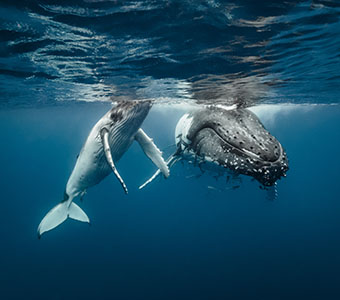The islands of the Banda Sea were once one of the most important groups of islands in the world. Known as the Spice Islands, this area was then the only known source of nutmeg, mace and cloves. Today these remote islands of Indonesia are better known by divers for their rich coral reefs that are overloaded with fishes and invertebrates, and at times, schools of hammerhead sharks.
The Banda Sea is a wide body of water in east Indonesia, between Raja Ampat and Sulawesi. There are a few shore-based dive operators in this area, mostly around Ambon, but with the better dive sites well beyond Ambon’s reach, the best way to explore this area is on a liveaboard. Several of liveaboards cruise this area, with most trips departing from Ambon. However, I recently joined a very different liveaboard trip on the Cheng Ho, a sojourn across the Banda Sea from Alor to Ambon.
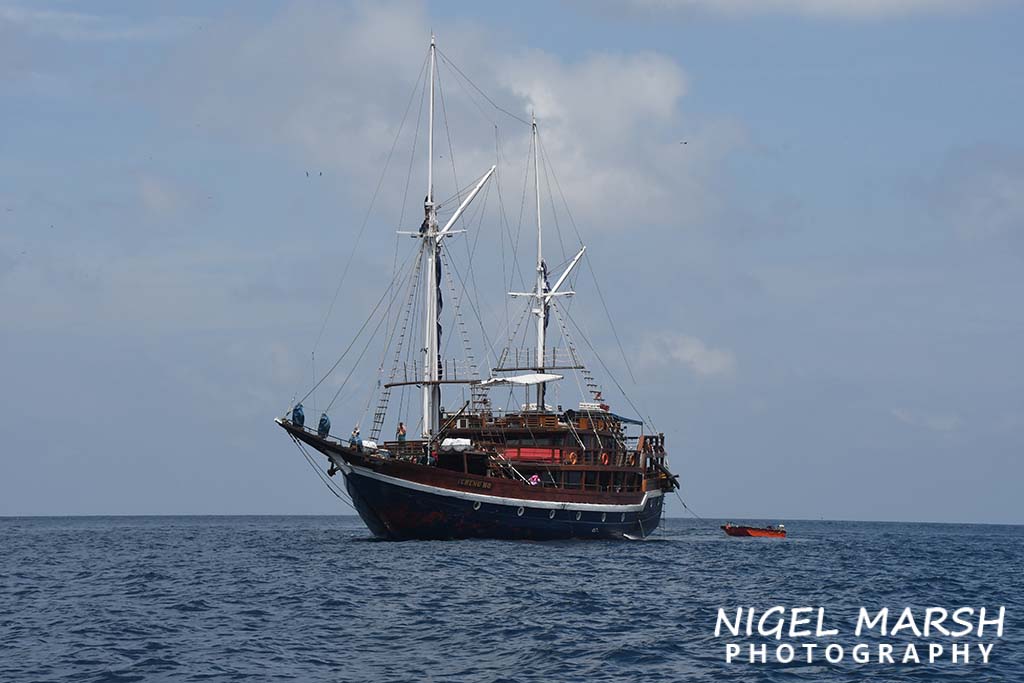
The Cheng Ho is a 35m long traditional style Phinisi schooner with 14 ensuite cabins that can accommodate 26 guests. The vessel is one of four own by Sea Safari Cruises that offer liveaboard trips across Indonesia. Flying to Alor, we were picked up at the airport and transferred to the Cheng Ho. My wife, Helen, and I quickly settled into our spacious cabin, then setup our camera housing for a special treat, an encounter with Mawar.

The itinerary didn’t allow us to dive in Alor, as we had to travel over 600 nautical miles over the next nine days, which meant travelling every night and often between dives. However, before we departed Alor we headed out in two small boats to meet the local celebrity, the dugong Mawar.

This over-friendly sea cow swam straight up to the boat and proceeded to hump it. For safety reasons you are not allowed in the water with this frisky male. Instead, we took photos from the boat as he constantly came within touching distance of us. After twenty minutes he got bored and swam off, so we got underway.
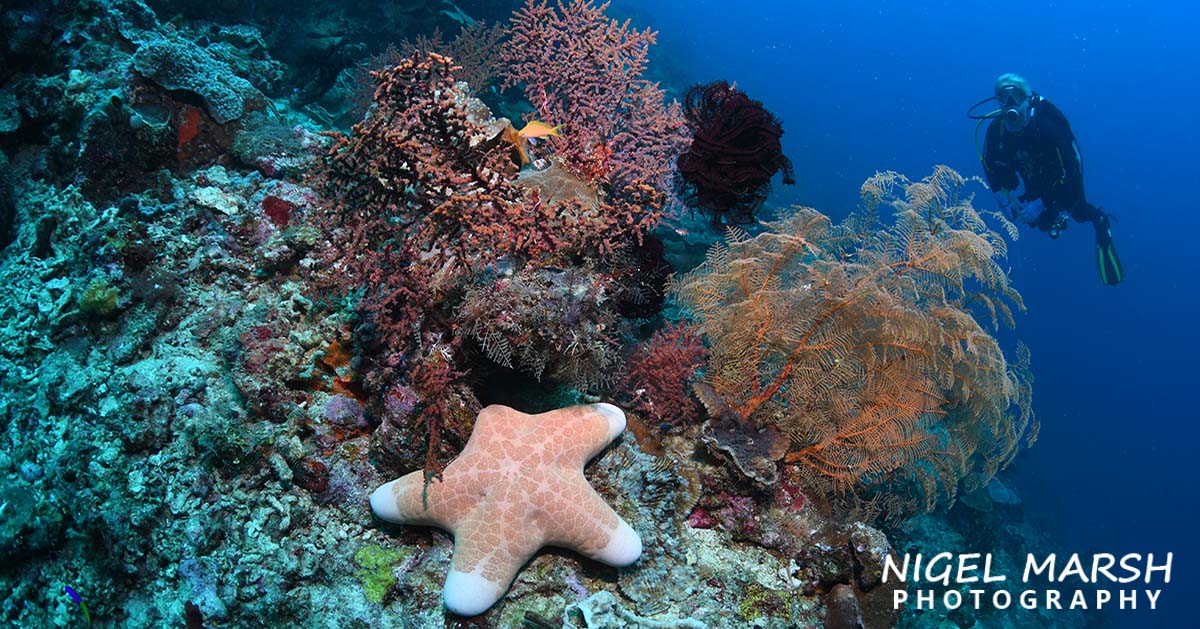
Over the next seven days we did some amazing diving off remote islands, atolls and pinnacles. For the first three days we dived sites in the southern Banda Sea. These sites were typically sloping reefs, with pretty hard coral gardens in the shallows and barrel sponges, gorgonians and soft corals decorating the walls. Each of these reefs was home to a great variety of reef fish and a good supply of pelagic visitors.

We enjoyed dives at Reong Island, Tanjung Tutan, Nyata Slope, Palau Limtutu and Terbang, seeing mackerel, tuna, morays, sea snakes, barracuda and garden eels.

A highlight in this southern area was Palau Laut. The reef at this site was washed by a current, with schools of trevally, snapper, fusiliers and rainbow runners. We saw a large tawny nurse shark and a very fat porcupine ray at this site. Halfway through the trip we arrived at Nildesperandum, an isolated coral atoll at the very heart of the Banda Sea. This site marked the start of reefs where schooling hammerheads are seen. Hammerheads are seen in the Banda Sea over two seasons – March to May and September to November.

Unfortunately, we didn’t spot any hammerheads on our three dives, but still enjoyed the coral walls, seeing patrolling barracuda, mackerel, trevally and dog-tooth tuna. A feature of this site were moray eels, dozens of them, including rare spotted morays.
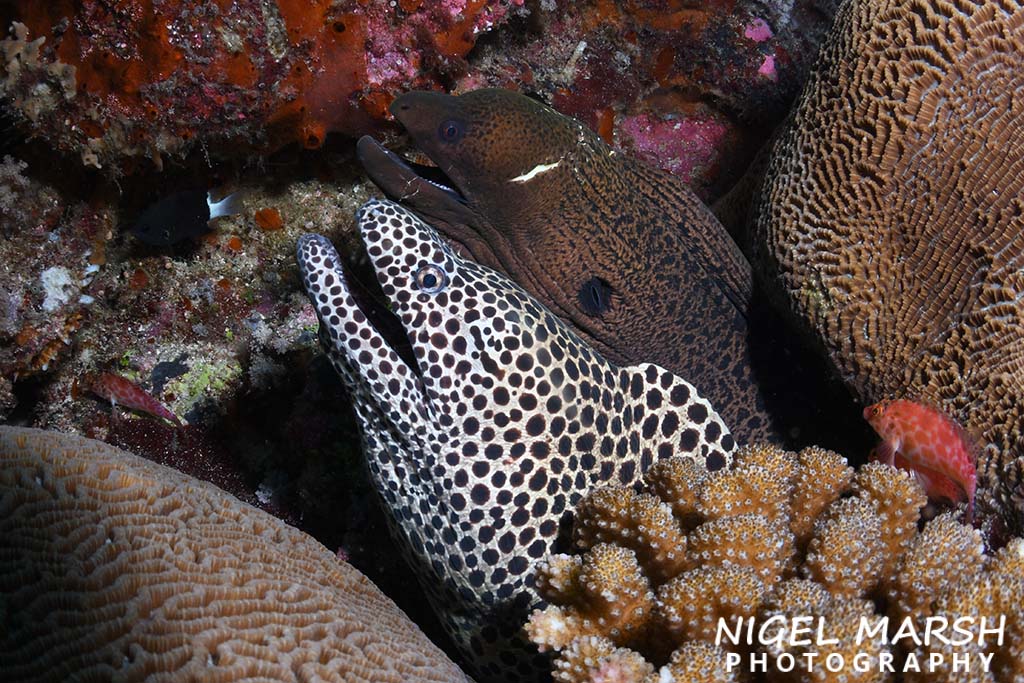
Venturing further into the northern Banda Sea we next explored the famous Manuk. This volcanic island has black sand, spectacular corals, great fish life and an incredible number of sea snakes. On each dive we saw dozens of Chinese and yellow-lipped sea kraits searching the reef for food. We also got a few brief glimpses of several solitary scalloped hammerheads, but no school.
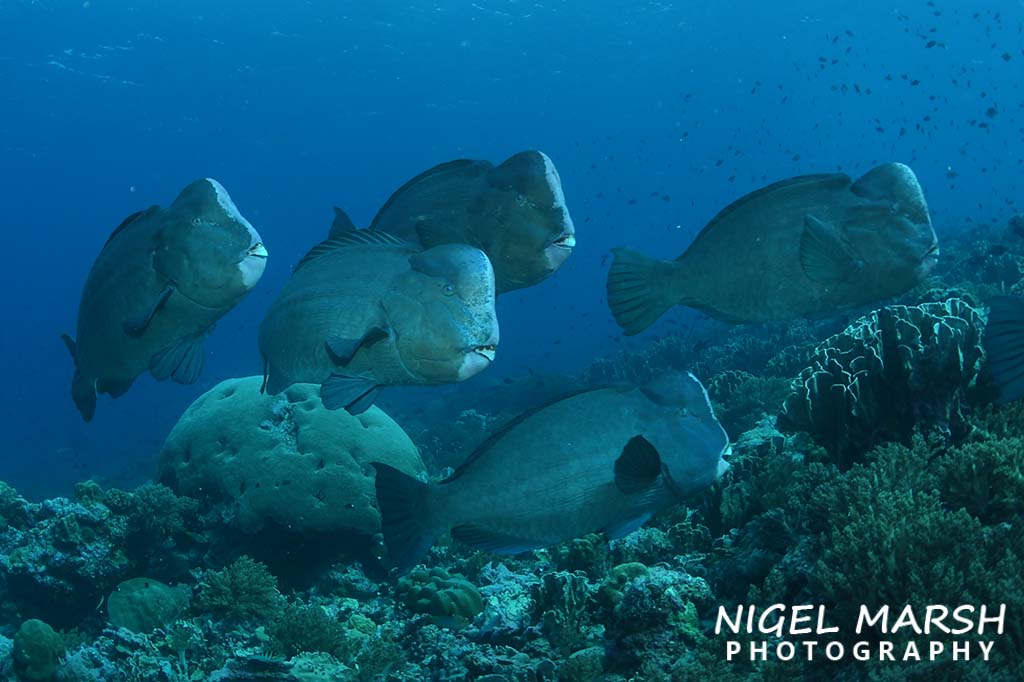
We enjoyed other lovely reef diving in the northern Banda Sea at sites like Lava Flow, Kerang Hatta and Nusa Laut, and while we saw great corals and fish, we didn’t see any hammerheads at these sites. Our last chance to see hammerheads came on a late afternoon dive at Suanggi. Descending on this pinnacle we didn’t like our chances for hammerheads, as the visibility was only 10m (less than half the visibility we had enjoyed throughout the trip) and the water was very dark. For thirty minutes we looked into the gloomy water, seeing great fish life, but no sharks.
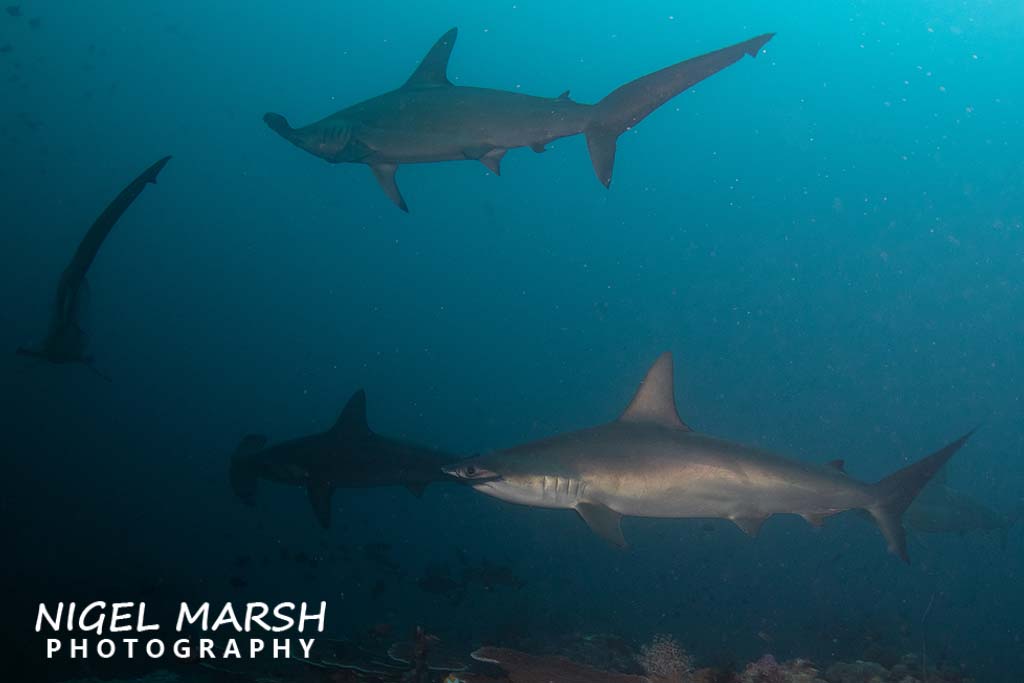
Deciding we had missed the sharks, we ascended to the top of the pinnacle when suddenly we had nine large scalloped hammerheads cruising around us. The sharks made three passes, not coming very close, but close enough to leave a lasting memory.
Our sojourn across the Banda Sea was an epic dive adventure. We may have only done three dives a day, but sailing the historic Spice Islands and seeing hammerheads, sea snakes and a host of other great species made for an unforgettable dive trip.




